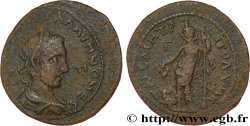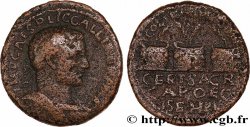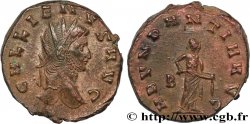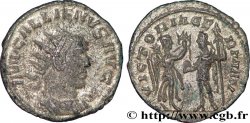brm_278564 - GALLIENUS Sesterce
Not available.
Item sold on our e-shop (2012)
Price : 195.00 €
Item sold on our e-shop (2012)
Price : 195.00 €
Type : Sesterce
Date: printemps - fin
Date: 254
Mint name / Town : Roma
Metal : copper
Diameter : 27,5 mm
Orientation dies : 6 h.
Weight : 14,58 g.
Rarity : R2
Coments on the condition:
Exemplaire sur un petit flan bien centré au droit. Usure régulière avec un beau portrait. Patine marron foncé de collection ancienne
Catalogue references :
Predigree :
Exemplaire provenant de la collection du baron Louis Chaurand, dispersée à Drouot le 10 avril 2012, lot n°233
Obverse
Obverse legend : IMP C PIC LIC GALLIENVS P F AVG.
Obverse description : Buste lauré et cuirassé de Gallien à droite avec pan de paludamentum, vu de trois quarts en avant (B*01).
Obverse translation : "Imperator Cæsar Publius Licinius Gallienus Pius Felix Augustus", (L’empereur césar Publius Licinius Gallien pieux heureux auguste germanique).
Reverse
Reverse legend : LIBERALITAS AVGG/ S|C.
Reverse description : Liberalitas (la Libéralité) drapée debout à gauche, tenant un abaque de la main droite, une corne d’abondance de la main gauche.
Reverse translation : “Liberalitas Augustorum”, (la Libéralité des augustes).
Commentary
Poids léger. Rubans de type 3.








 Report a mistake
Report a mistake Print the page
Print the page Share my selection
Share my selection Ask a question
Ask a question Consign / sell
Consign / sell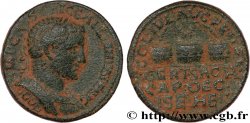
 Full data
Full data
